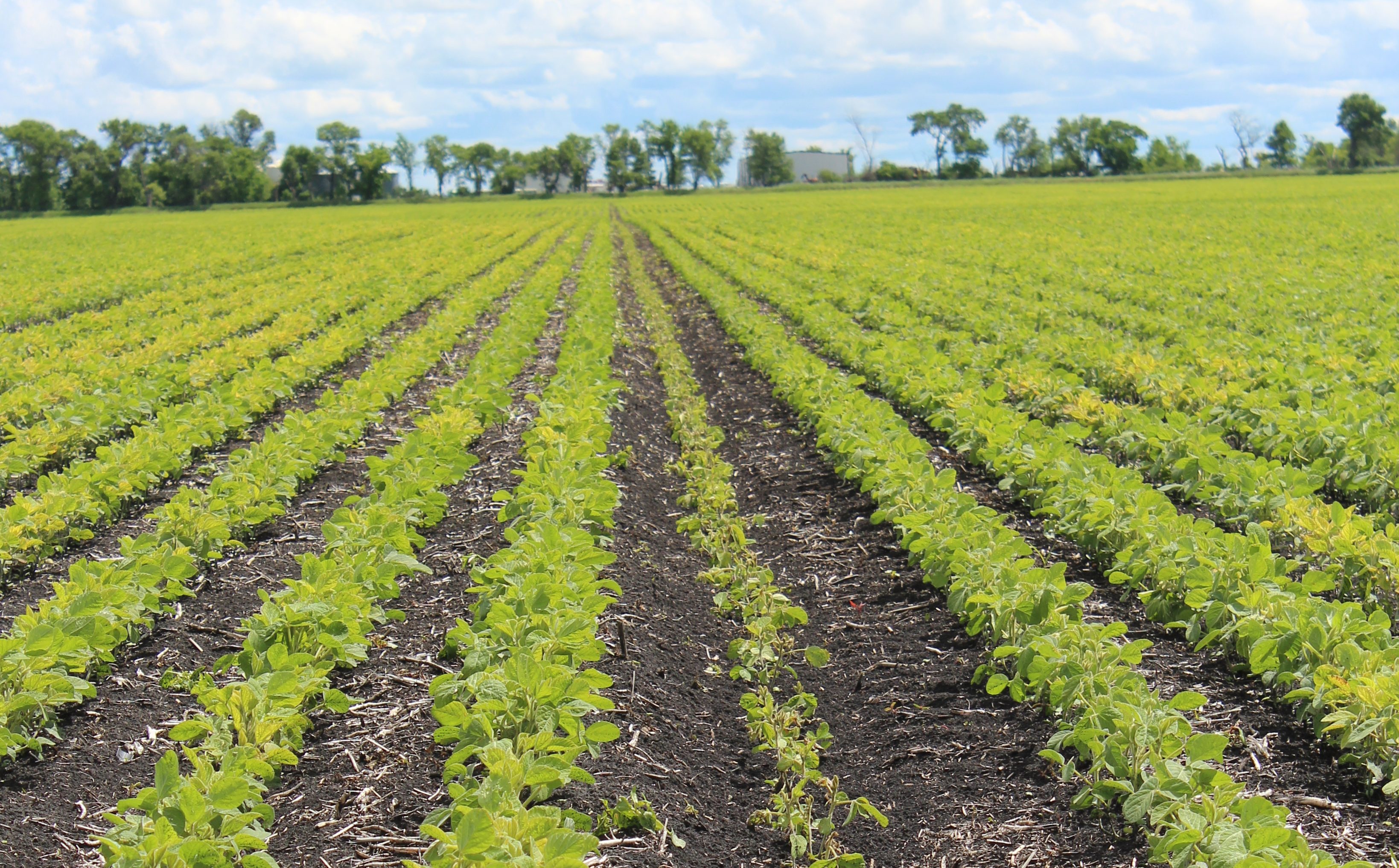Marla Riekman, MSc, PAg, CCA, Soil Management Specialist, Manitoba Agriculture
Following another wet fall, farmers are again worried about the impact of ruts and soil compaction on the upcoming crop. Soil compaction can be tricky to diagnose – penetrometer readings can tell you if a soil is tight or may resist root growth, but these readings are not always well correlated with crop yield.
Generally, it’s the crop itself which indicates compaction. Stunted crop height and nitrogen deficiency can all be indicators of a compaction problem. Watch for wheel traffic patterns in the field and inspect crop roots in the suspect areas for kinky growth patterns (sideways and not down) and poor nodulation (Figure 1).
The effect of compaction on yield may be very inconsistent as there is such high variability in traffic patterns, equipment weight and soil moisture conditions, which lead to inconsistent effects of compaction across a field.
This makes research on yield loss due to compaction very difficult to manage. Timely rains and wet weather following compaction will decrease the impact on yield, virtually erasing the compaction that was purposefully caused by researchers. As such, field research may show impacts on crop emergence and root depth, but often there is little effect on yield or simply no yield data taken.
While scientific data on yield is limited, there is anecdotal evidence showing lower yields in soybeans due to extensive wheel traffic. One farmer in Minnesota noted an area of the field where he had cleared out a windbreak, causing heavy compaction, and the soybeans were less than half the height of the rest of the field (Figure 2). This resulted in a 13.7 bu/ac decrease in soybean yields between no traffic (59.1 bu/ac) and wheel traffic (45.4 bu/ac) strips in his field. The yield loss was not that high considering the dramatic differences in plant height.
This demonstrates the soybean’s ability to compensate for compacted soil conditions; however, this is just anecdotal data – research would be required to confirm if this yield impact is typical.
Dry beans, on the other hand, may suffer more under compacted soil conditions. Research has shown a 27% yield reduction due to soil compaction, primarily due to greater susceptibility to disease pressure and smaller canopies that experience more damage from hail events.
So if soil compaction will affect yields, then what can you do about it?
Just sit back and wait.
Mother Nature does help to alleviate compaction, but she needs to create drying conditions for this to work. Freeze-thaw helps to break up compaction at the soil surface, but deeper compaction is affected by wet- dry changes, where cracks are formed deep into the soil profile. We haven’t seen a dry fall for a few years, which means compaction hasn’t been naturally alleviated, and rather seems to be increasing due to continued travel on wet or moist soils.
Help speed up the drying process by planting a cover crop.
Cover crops will help use up some of the excess moisture in fall, drying out the soil to move towards that “cracking” scenario. Cover crops also create root channels or “bio-pores,” which may be exploited by future crop roots to move deeper into the soil profile for water and nutrients, where the compacted layer may have otherwise restricted them.
Consider deep tillage or sub-soiling to alleviate compaction.
However, keep in mind that to effectively sub-soil, the soil needs to be very dry so that cracking and shattering between the shanks can take place. If the soil is still moist at depth, sub-soiling may just create further compaction deep in the soil, which may not be fixed with tillage later on. The benefits of sub-soiling may also not last for long – research in the Red River Valley has shown that, while sub-soiling did improve soil resistance (lower penetrometer readings), by the third year after sub-soiling, soil resistance was back to where it had been before sub-soiling. This means that sub-soiling may need to be added into a tillage rotation, if it is to be used at all. And, as this is an expensive form of tillage, you would need to see a significant yield improvement to offset the cost.
Minimize compaction before it happens.
The final option, and one that may be the most difficult for farmers, is to simply not cause as much compaction in the first place. Choosing not to travel on a field when it is moist (and at the highest risk of compaction) is simply not an option when field operations need to be completed. However, you can try to minimize the impact of compaction by running tires at their rated pressure (spreading out the wheel footprint by lowering pressure and choosing wider diameter tires), decreasing the load or weight of equipment, and limiting random traffic across the field. When risk of compaction is high, we need to be deliberate about how we travel on the field, so we don’t further complicate the problem.

